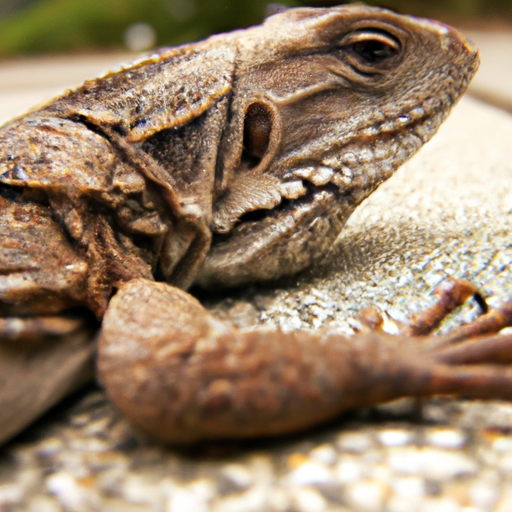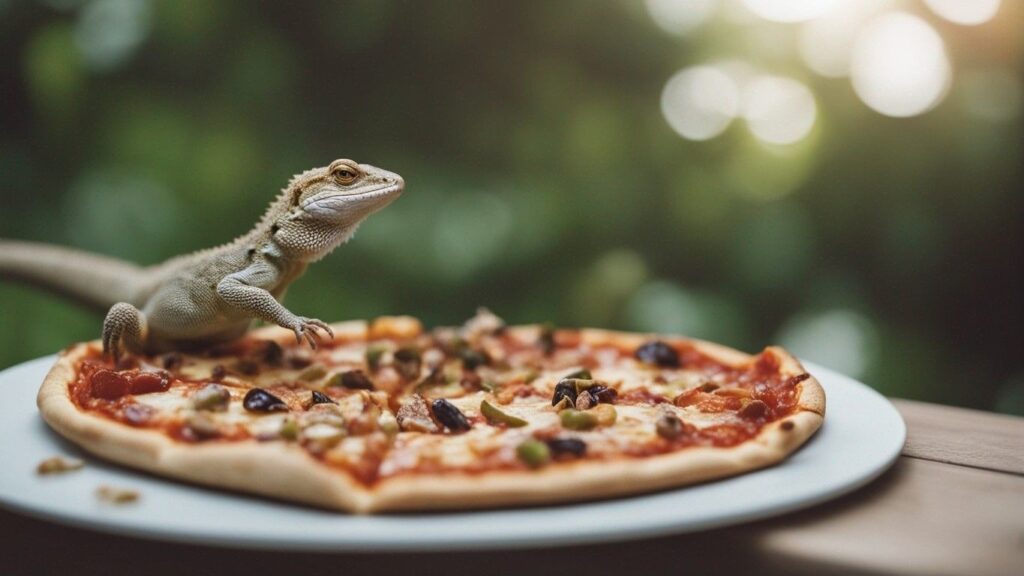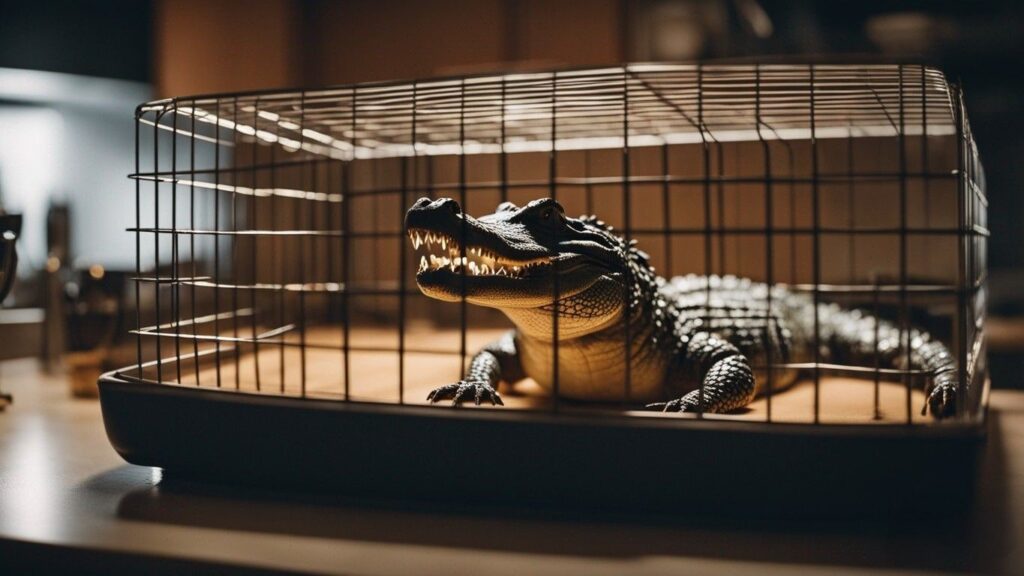So you’ve stumbled upon a fascinating wild lizard while out exploring and you can’t help but wonder, can you keep it as a pet?
While the idea of having a unique and exotic pet might be tempting, it’s important to consider the ethical and practical aspects of bringing a wild lizard into your home.
In this article, we will explore the pros and cons of keeping a wild lizard as a pet, taking into account factors such as legality, habitat requirements, and the lizard’s overall well-being.

Legal Considerations
Laws and Regulations
Before considering keeping a wild lizard as a pet, it is crucial to be aware of the laws and regulations governing the ownership of wildlife in your area.
Different countries, states, and even municipalities may have their own set of laws in place to regulate the ownership and sale of wild animals.
These laws are designed to protect both the wild animals and the ecosystem they belong to.
Therefore, it is important to thoroughly research and understand the legal requirements before proceeding with any plans of keeping a wild lizard as a pet.
Permits and Licenses
In some cases, obtaining permits and licenses may be required to legally keep a wild lizard as a pet.
These permits are usually issued by government agencies responsible for wildlife conservation and management.
The application process typically involves providing information on the species, the enclosure setup, and your qualifications as a responsible pet owner.
It is important to note that permits and licenses may only be granted if specific conditions are met, such as demonstrating the ability to meet the animal’s needs and ensuring that the acquisition of the lizard will not negatively impact the wild population.
Housing Needs
Terrarium Size
Providing an appropriate-sized terrarium is essential for the well-being of a pet lizard. The size of the enclosure will vary depending on the species of lizard you intend to keep. Some lizards require larger spaces to roam, while others may thrive in smaller enclosures. Researching the specific needs of the lizard species you are considering is crucial in determining the right size of the terrarium. A larger habitat allows for more natural behaviors and promotes a healthier and happier lizard.
Temperature and Humidity
Lizards are ectothermic, meaning they rely on external heat sources to regulate their body temperature. It is crucial to provide a temperature gradient within the terrarium to allow the lizard to thermoregulate effectively. This can be achieved by using heat lamps or heating pads, along with appropriately positioned thermometers to monitor the temperature. Additionally, maintaining the right humidity level is essential for the overall health of the lizard. Some species require higher humidity levels, while others prefer a drier environment. Understanding the specific temperature and humidity requirements of your chosen lizard species is vital to creating a suitable habitat.
Substrate
Choosing the right substrate for the terrarium is important for maintaining cleanliness and promoting the natural behaviors of the lizard. Various options are available, such as reptile carpet, sand, coconut fiber, and bark. It is important to research the specific needs of your lizard species to determine the most suitable substrate. Some lizards may have specific substrate requirements due to their natural habitats, so it is crucial to mimic these conditions as closely as possible in the terrarium.
Accessories and Enrichment
Providing appropriate accessories and enrichment within the terrarium is essential for the lizard’s physical and mental well-being. Accessories such as branches, rocks, and hides allow the lizard to have various climbing, basking, and hiding options, mimicking its natural habitat. Enrichment items like puzzle feeders, tunnels, and interactive toys can help stimulate the lizard’s mind, preventing boredom and promoting healthy behaviors. Researching the specific needs and behaviors of your lizard species will guide you in selecting the most suitable accessories and enrichment items.
Feeding and Nutrition
Wild vs. Captive Diet
When considering the nutritional needs of a pet lizard, it is essential to understand the differences between their wild and captive diets. Wild lizards have a varied diet comprising live prey, including insects, small vertebrates, and plants. Captive lizards, on the other hand, are usually fed a diet of commercially available feeder insects and, in some cases, fruits and vegetables. While some species can adapt well to captivity and thrive on a captive diet, others may require a more specialized diet mimicking their wild feeding habits. It is important to research the specific dietary needs of your chosen lizard species to provide a balanced and nutritionally complete diet.
Food Sources
Feeder insects such as crickets, mealworms, and dubia roaches are commonly used to meet the dietary needs of captive lizards. These insects should be of high quality and gut-loaded with appropriate supplements to ensure optimal nutrition for the lizard. Additionally, certain lizard species may require the incorporation of fruits, vegetables, or other specific food sources in their diet to meet their nutritional requirements fully. Researching the appropriate food sources for your chosen lizard species is crucial in maintaining their health and preventing malnutrition.
Supplementation
To ensure proper nutrition, it may be necessary to supplement your lizard’s diet with various vitamins and minerals. Calcium and vitamin D3 are particularly important for reptiles, as they are essential for proper bone development and metabolism. Dusting or gut-loading feeder insects with calcium and vitamin D3 supplements is commonly practiced. However, it is important to follow species-specific guidelines and consult with a reptile veterinarian to determine the appropriate supplementation for your lizard. Over-supplementation can be harmful, so it is crucial to strike the right balance.
Healthcare and Veterinary Needs
Regular Check-ups
Regular check-ups with a reptile veterinarian are crucial for maintaining the overall health and well-being of your pet lizard. These check-ups allow for early detection of any potential health issues and provide an opportunity to discuss preventive care measures. During the check-up, the veterinarian will perform a thorough examination, including checking body condition, assessing vital signs, and addressing any concerns or questions you may have. Regular check-ups help ensure that any health issues are detected and treated promptly, increasing the chances of a positive outcome.
Common Health Issues
Like any other pet, lizards are susceptible to certain health issues. Some common health problems in lizards include respiratory infections, metabolic bone disease, parasite infestations, and shedding problems. Recognizing the signs of illness, such as changes in behavior, appetite, or appearance, is crucial in identifying potential health issues. It is important to seek immediate veterinary attention if you suspect your lizard is unwell. Early intervention and proper veterinary care can significantly increase the chances of a successful recovery.
Finding a Reptile Veterinarian
Finding a reptile veterinarian with experience and knowledge in handling lizards is essential for their care. Not all veterinarians have expertise in reptile medicine, so it is important to do thorough research and find a qualified professional. Reputable veterinary clinics or exotic animal specialists are good places to start your search. It is recommended to schedule an initial consultation with the veterinarian to assess their experience, facilities, and overall approach to reptile care. Building a relationship with a reliable veterinarian will ensure that your lizard receives the appropriate medical attention when needed.

Socialization and Handling
Taming a Wild Lizard
Taming a wild lizard requires patience, time, and a gentle approach. Wild lizards are not accustomed to human interaction, and they may be fearful or defensive. The key is to establish trust gradually by providing a stress-free environment and positive reinforcement. Start by spending time near the terrarium without making sudden movements or loud noises. Over time, introduce hand feeding to create positive associations. Once the lizard is comfortable with hand feeding, you can slowly introduce gentle handling. Ensuring a calm and relaxed setting is crucial to the successful taming process.
Safe Handling Techniques
Proper handling techniques are essential to ensure the safety of both the lizard and the handler. It is important to support the lizard’s body properly and avoid excessive pressure or force that may cause injury. Depending on the size and behavior of the lizard, handlers may need to wear gloves or use tools like snake hooks to minimize the risk of being bitten or scratched. Gradual, slow movements and avoiding sudden gestures are key to maintaining a stress-free and safe environment during handling sessions.
Potential Risks
Handling a wild lizard, even when tamed, carries certain risks. Lizards may bite or scratch if they feel threatened, leading to potential injuries. Additionally, some lizard species may carry bacteria or parasites that can be transmitted to humans through bites or scratches. It is important to practice good hygiene, including proper handwashing, after handling any reptile. Children and individuals with weakened immune systems should be especially cautious. Understanding and respecting the potential risks associated with handling wild lizards is necessary to ensure the safety and well-being of both the reptile and the handler.
Potential Risks and Dangers
Zoonotic Diseases
Zoonotic diseases are illnesses that can be transmitted between animals and humans. Wild lizards, like any creatures, can carry bacteria, parasites, or viruses that may pose a risk to humans. These can be transmitted through bites, scratches, or contact with feces. Salmonella is one of the most commonly known zoonotic diseases associated with reptiles. It is vital to practice good hygiene, including proper handwashing, after handling any reptile or cleaning their enclosure. By following proper hygiene practices, the risk of contracting zoonotic diseases can be significantly reduced.
Escape Risks
Wild lizards have evolved in their natural habitats, where they are perfectly adapted to survive and thrive. Keeping them as pets introduces the risk of escape, as they may find ways to exploit weaknesses in their enclosure or accidentally be let loose by an unaware owner. Escaped lizards can potentially spread diseases or disrupt local ecosystems. Ensuring a secure enclosure with proper locks and regularly inspecting the terrarium for any damage is crucial for minimizing escape risks. Responsible pet ownership includes taking measures to prevent accidental escapes and being proactive in finding and safely capturing any escaped lizard.
Impact on Native Ecosystems
Releasing a wild lizard into a non-native environment can have severe ecological consequences. These lizards may outcompete or prey upon local species, disrupt natural food chains, and disturb the balance of ecosystems. It is important to ensure that any wild lizard kept as a pet does not end up being released into the wild. Responsible pet owners have an obligation to protect the environment and prevent the introduction of non-native species that can harm native wildlife. If circumstances arise where you can no longer care for your lizard, it is essential to explore legal and ethical alternatives, such as contacting a local reptile rescue or wildlife rehabilitation center.
Ethical Considerations
Responsible Pet Ownership
Keeping any pet, including a wild lizard, requires a strong commitment to responsible pet ownership. This encompasses meeting the animal’s physical and psychological needs, providing proper nutrition, healthcare, and enriching their environment. Responsible pet owners invest time and effort in learning about their pet’s needs and behaviors, ensuring that their well-being is always a priority. It is important to recognize that every animal, even a wild lizard, deserves to live a life free from suffering and in an environment that enables them to exhibit their natural behaviors.
Wildlife Conservation
Wild lizards play important roles in ecosystems, contributing to biodiversity and maintaining ecological balance. Collecting wild lizards for the pet trade can have detrimental effects on their populations and their habitats. Responsible pet owners should consider the impact their actions may have on wild populations and support conservation initiatives aimed at protecting lizard species and their natural habitats. By supporting wildlife conservation efforts, pet owners can help secure a future for both wild lizards and the ecosystems they belong to.
Supporting Reputable Breeders
If owning a lizard is your goal, a responsible alternative to keeping a wild lizard is acquiring one from a reputable breeder. Reputable breeders specialize in breeding captive specimens and work to ensure the health and genetic diversity of the animals they produce. By obtaining a lizard from a breeder, you can be more confident in the animal’s health history, genetic background, and the overall welfare of the species. Supporting reputable breeders encourages responsible breeding practices and helps reduce the demand for wild-caught lizards.
Training and Enrichment
Basic Training
Training a lizard goes beyond the traditional idea of obedience training like that of dogs. Lizards can be conditioned to respond to cues that are important for their safety and well-being. For example, teaching a lizard to associate a specific sound or visual cue with feeding times can help prevent accidental bites during hand-feeding. Basic training techniques should be based on positive reinforcement and implemented gradually, considering the individual lizard’s behavior and species-specific needs.
Mental Stimulation
Lizards, like all animals, benefit from mental stimulation. Providing opportunities for mental engagement can prevent boredom and promote healthy behaviors. Activities like puzzle feeders, hide-and-seek games, or introducing novel objects can help stimulate a lizard’s curiosity and provide mental exercise. Additionally, creating a varied and enriching environment by changing the layout of the terrarium, introducing new accessories, or providing different textures can provide ongoing mental stimulation.
Enrichment Activities
Enrichment activities are designed to keep lizards engaged and satisfied by encouraging natural behaviors. For example, offering branches for climbing, providing rocks or logs for basking, or adding tunnels for exploring can all contribute to a more enriched environment. Engaging in enrichment activities not only supports the lizard’s physical and mental well-being but can also help prevent stress-related behaviors, such as aggression or excessive digging.
Legal Alternatives
Bred in Captivity
Choosing a lizard that has been bred in captivity, rather than one caught in the wild, is a responsible alternative to keeping wild lizards as pets. Captive-bred lizards are generally more suitable for the pet trade as they tend to be acclimated to captive environments, less prone to stress-related illnesses, and have a more predictable temperament. Acquiring a lizard from a reputable breeder who adheres to ethical breeding practices ensures that the animal’s welfare and sustainable breeding are prioritized.
Rescued Lizards
Another ethical alternative to acquiring a wild lizard is to adopt or rescue one. There are situations where lizards may be in need of rehoming due to owners who can no longer care for them or from confiscations related to illegal wildlife trafficking. Rescue organizations and reputable reptile sanctuaries provide a safe and suitable environment for these lizards, often working to rehabilitate them and find them forever homes. By choosing to rescue, you are giving a deserving lizard a chance at a happy and fulfilling life while supporting the efforts to provide proper care and rehabilitation to animals in need.
Educational Opportunities
Observing Wild Lizards
Observing wild lizards in their natural habitat can provide valuable educational opportunities. This can be done through nature hikes, visits to national parks, or participating in guided tours with knowledgeable naturalists. Outdoor enthusiasts and reptile enthusiasts can learn about the various species of lizards, their behaviors, and their importance in the ecosystem. By observing them in the wild, individuals gain a deeper understanding and appreciation for these magnificent creatures.
Educational Exhibits
Educational exhibits, such as reptile shows, museums, or educational centers, provide a controlled and informative environment for learning about lizards. These exhibits often include displays showcasing different species, their habitats, and the importance of conservation. Knowledgeable staff members are typically available to answer questions and provide educational resources. Engaging with educational exhibits allows individuals to learn about lizards’ natural history, conservation efforts, and responsible pet ownership.
Zoos and Wildlife Centers
Zoos and wildlife centers can provide excellent educational opportunities to learn about lizards and other reptiles. These facilities often have dedicated reptile exhibits, providing an up-close and personal experience with various species. Visiting zoos and wildlife centers can provide insight into the proper care and conservation efforts involved in managing these magnificent creatures. Many zoos also offer educational programs, such as interactive shows or workshops, which further enhance the learning experience.
Final Thoughts
In conclusion, while the idea of keeping a wild lizard as a pet may seem intriguing, there are many legal, ethical, and practical considerations to take into account.
Understanding the laws and regulations, meeting the housing, feeding, and veterinary needs of the lizard, and practicing responsible pet ownership are crucial.
Exploring alternatives such as acquiring a lizard from a reputable breeder or adopting a rescued lizard ensures the welfare of the animal and contributes to conservation efforts.
Engaging in educational opportunities to learn about lizards in their natural habitats or through educational exhibits promotes a deep understanding and appreciation for these fascinating creatures while supporting ethical and sustainable practices.




